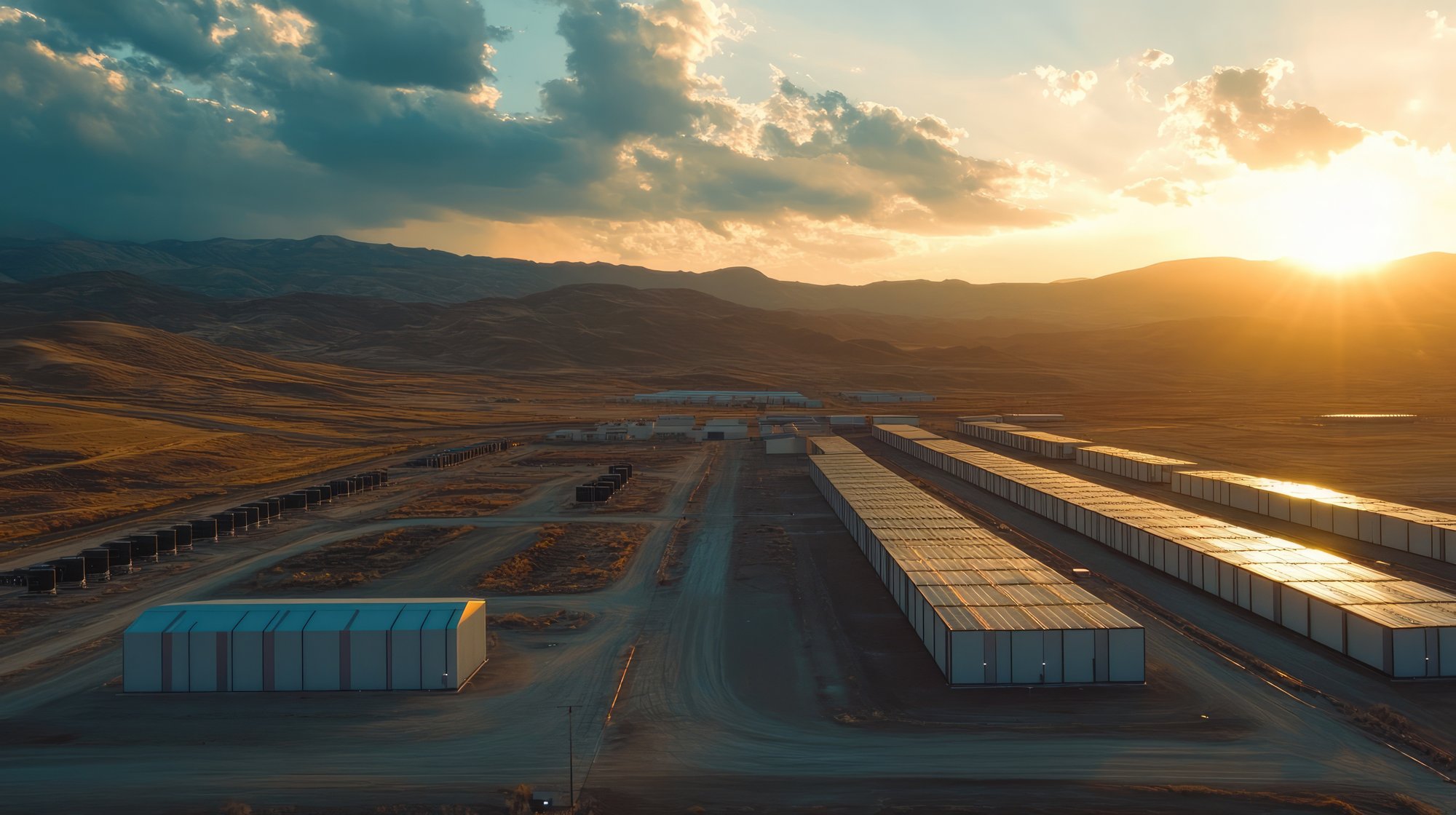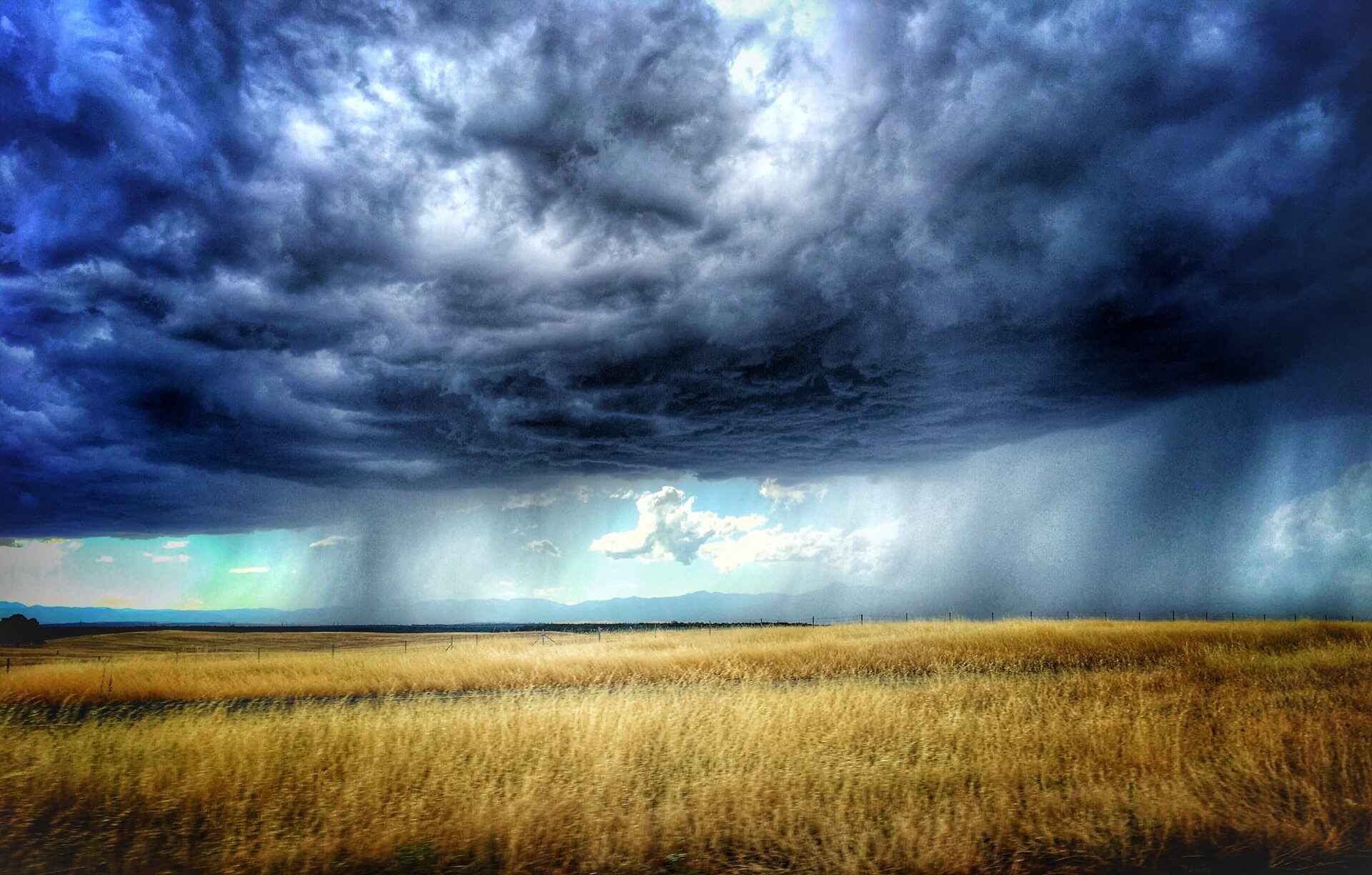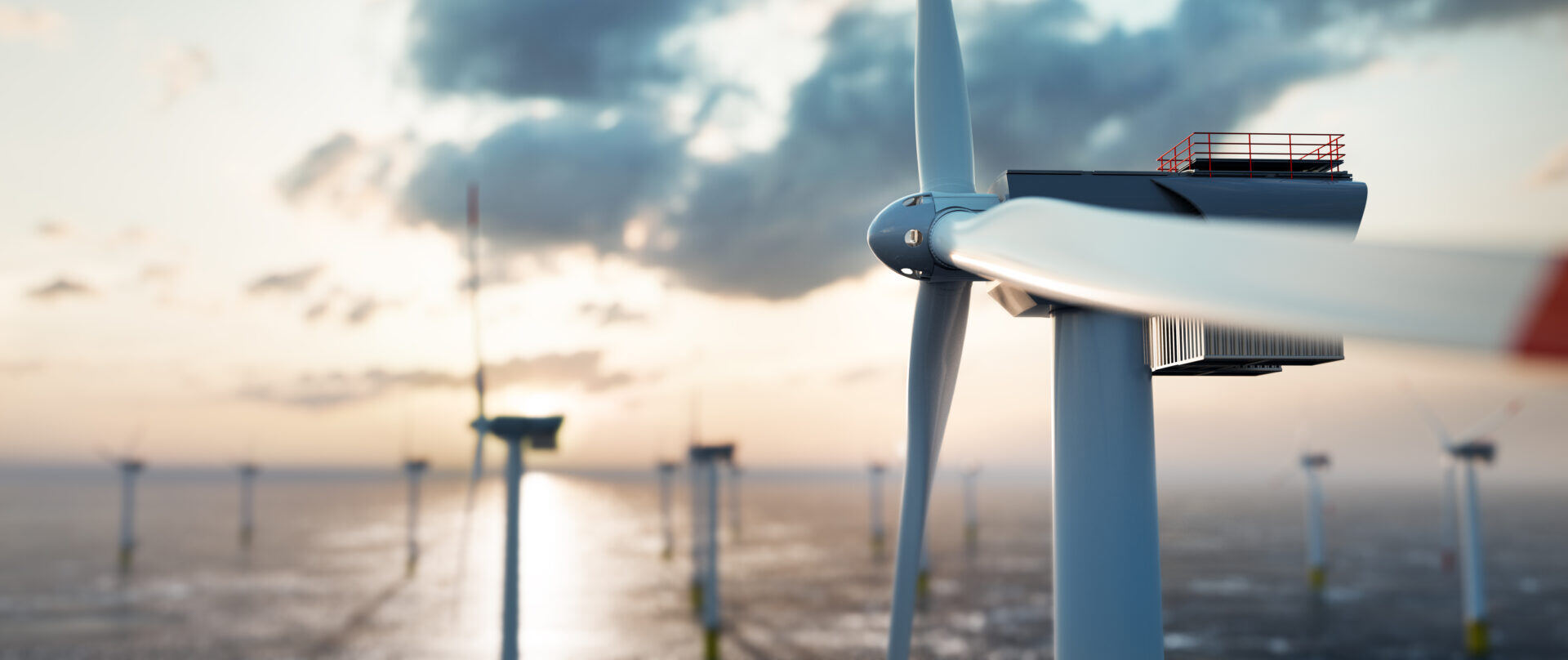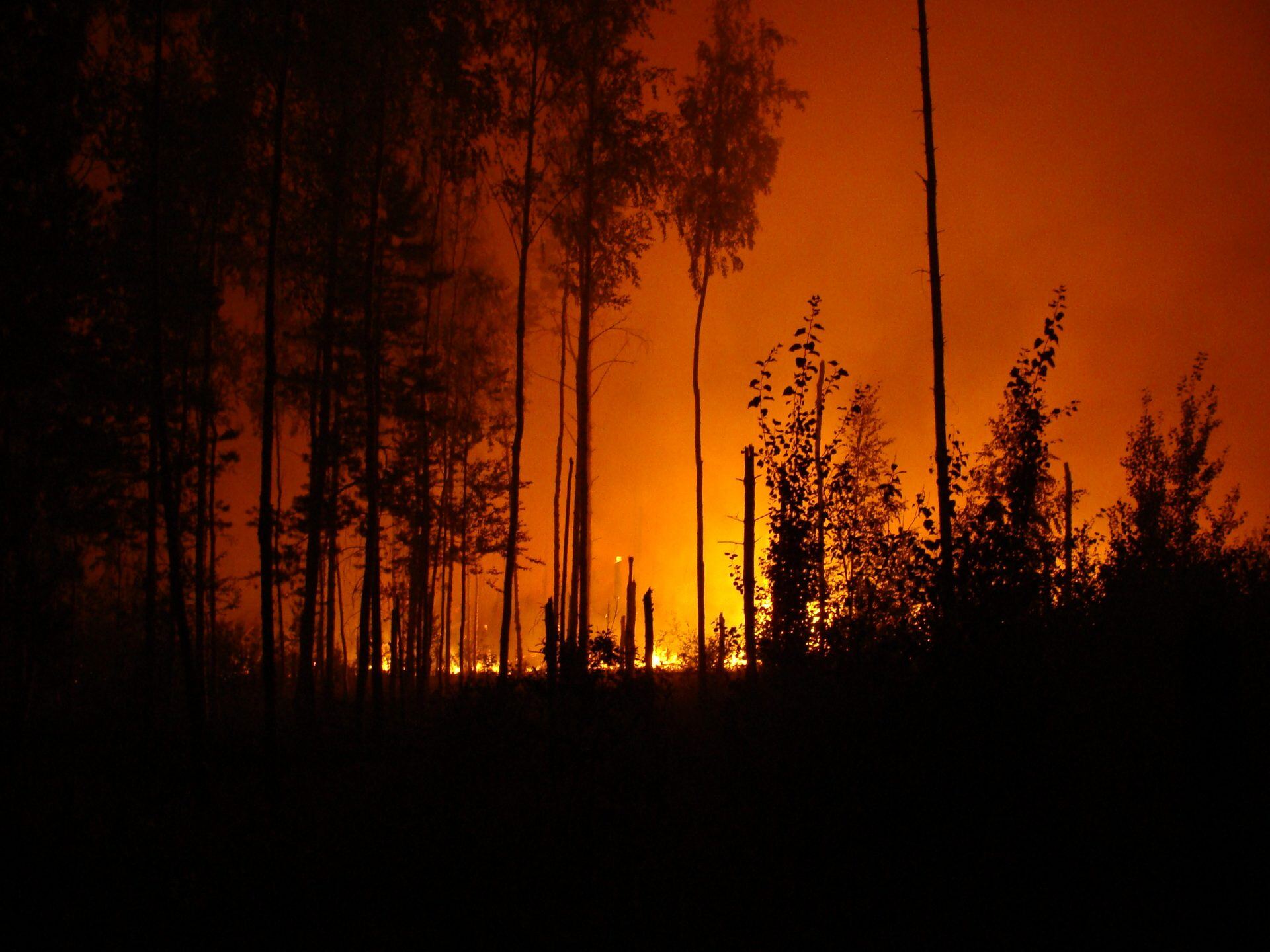IT’S HURRICANE SEASON: HERE’S HOW TO PREPARE YOUR WIND AND SOLAR ASSETS
Research shows that hurricanes are becoming more intense and frequent — and the damage caused is increasingly costly. While you may not be able to prevent hurricanes, you can take steps to mitigate their impact.

Stay in touch
Subscribe to our newsletter for expert insights, company updates, and the latest in renewable energy management solutions.
IT’S HURRICANE SEASON: HERE’S HOW TO PREPARE YOUR WIND AND SOLAR ASSETS
Research shows that hurricanes are becoming more intense and frequent — and the damage caused is increasingly costly. While you may not be able to prevent hurricanes, you can take steps to mitigate their impact.
This is the third article in a series on the impact of extreme weather events and what owners and operators of renewable assets can do about it. Don’t miss the other articles in the series: Read them here.
If you own or operate a wind or solar farm in one of the hurricane-prone US states, you’re well aware that the 2020 and 2021 hurricane seasons were record-setting. And, once again, experts predict above-normal tropical activity in the Atlantic for the 2022 hurricane season that started on June 1.
AccuWeather predicted in March that there will be 16–20 named storms in 2022 and six to eight hurricanes. (According to EarthSky: “Tropical storms get a name when they display a rotating circulation pattern and wind speeds reach 39 miles per hour (63 kilometers per hour). This is very slightly lower than the 21 named storms in 2021 and the 30 in 2020, but still higher than the long-term average.
In this article, we’ll look at the risks hurricanes pose for wind and solar projects and how owners and the industry can prepare for and respond to this increasingly serious threat.
Note: The weather phenomena referred to as “hurricanes” in this article has different names depending on where they originate: they’re known as “hurricanes” in the Atlantic Ocean and the eastern north Pacific Ocean; “typhoons” in the western Pacific Ocean; and “tropical cyclones” in the south Pacific Ocean and Indian Ocean (Source: World Health Organization).

A GROWING — AND INCREASINGLY EXPENSIVE — THREAT
The destructive power of hurricanes like Hurricane Ida or Hurricane Katrina are well-documented. And, according to the Hail or High Water report from renewables insurance specialist GCube, hurricanes made up 75% of the insurance claims caused by natural catastrophes and extreme weather by value in the US renewables sector from 2010–2020.
GCube’s research found that hurricanes were not only the most common reason for weather-related insurance claims at US wind farms in that period, but that they caused the largest financial losses on average. GCube also reported that the average weather-related losses at wind farms are 80 times more expensive than average losses at solar farms.
In the solar sector, hurricanes were the second most common cause of weather-related insurance losses after wildfires, and the second most expensive after hail. GCube warned that hurricanes are becoming “more frequent and severe, and their paths less predictable” and predicted that the number of wind farms hit by hurricanes will continue to increase.
In fact, four of the six most expensive US hurricanes for insurers were in the last five years, according to the Insurance Information Institute. Hurricane Ida in 2021 caused losses of $36bn, which puts it second only to 2005’s Hurricane Katrina; and the US’s National Oceanic and Atmospheric Administration (NOAA) said in 2020 that hurricanes have become stronger during the last four years.
This means there is a greater likelihood of one developing into a “Category 3” hurricane or higher (i.e., one with winds of 111mph+) — something the NOAA attributes to climate change: “There’s this remarkable building of this body of evidence that we’re making these storms more deleterious,” the study’s lead author James P. Kossin said.
It’s clear the renewables sector must prepare for the growing threat of hurricanes. But how? First, we need to understand why existing wind and solar plants are particularly at risk.

FOR EXISTING WIND AND SOLAR FARMS, THE RISK IS BUILT IN
Renewables underwriter Axis Renewables (Axis) and advisor Renewables Consulting Group (RCG) went into detail about the major damage hurricanes can do to wind and solar farms in their 2019 white paper Tropical Storm Preparedness for Onshore Renewable Energy Projects.
Their conclusion? The main risk for wind and solar farms lies in the technology itself.
HOW HURRICANES HARM WIND FARMS
“Storms outside the design parameters of the WTG can lead to failures and would typically be covered by insurance. WTG selection and specification is critical,” the report said.
The design standards defined by the International Electrotechnical Commission (IEC 61400-1, -2 and -3) define a safety class S for sites that experience extreme conditions but, given the increasing frequency of rare extreme events, one can expect that some turbines may have tight survival margins for Category 3+ winds. “Storms outside the design parameters of the WTG can lead to failures and would typically be covered by insurance. WTG selection and specification is critical,” the report said. An example of evolving design practice can be seen in Taiwan, an emerging offshore wind market. In 2018, they introduced an additional standard — Class T (Typhoon Class) — as turbines there must be able to withstand typhoons.
The main risks to wind turbines in hurricanes are:
- Rotor overspeed — typically caused by braking system failures
- Blade failures caused by excessive loading or wear and tear
- Failure of the yaw motor, which can increase overload risks
- Tower failures caused by excessive loads and/or soil damage
- Foundation failures that can result in the collapse of the turbine
- Failures of auxiliary systems such as reserve power or the grid
Developers and turbine manufacturers are used to working together on “site suitability” when selecting a turbine – including potential operational procedures and/or limitations to safeguard life and property. Owners should be further encouraged that turbine manufacturers are increasingly focusing on addressing the challenge of developing hurricane-resistant turbines. Of course, the developments will primarily benefit future projects, but better knowledge of hurricane hazards and R&D findings will also benefit existing turbines through smarter operational procedures and/or retrofits.

HOW HURRICANES HARM SOLAR FARMS
The issue of hurricane damage could potentially be even greater for solar, as there is no internationally recognized certification for solar panels, according to Axis and RCG. The fate of existing solar farms depends on local engineering codes and standards.
The main risks to solar farms in hurricanes are:
- Damage to panels by falling objects or accompanying hail
- Panels bending in extreme winds, causing micro-cracking
- Failures in panel support structures and racking systems
- Failures can be exacerbated in the case of soil liquefaction
- Damage to solar tracking systems caused by extreme vibration
- Failures of auxiliary systems such as reserve power or the grid
6 WAYS TO TACKLE HURRICANE RISKS HEAD-ON
While the risks to wind and solar farms are many, there are six things owners and operators can do to increase the resiliency of their plants should a hurricane hit:
- Assess hurricane susceptibility early on
- Monitor weather patterns
- Take advantage of technological innovation
- Ensure your site has appropriate drainage
- Put clear contracts and management protocols in place
- Stay on top of maintenance
We’ll go into each of these below.
1. ASSESS HURRICANE SUSCEPTIBILITY EARLY ON
Owners should be aware of hurricane risks if they are developing a wind or solar farm in a place that experiences hurricanes. They should also factor in the likelihood of hurricanes continuing to grow stronger and more frequent. The risk assessment should be updated periodically to inform contingency plans.
2. MONITOR WEATHER PATTERNS
During hurricane season — which typically runs from June to November in the US — information provided by national meteorological organizations are invaluable. One such organization is the US-based National Hurricane Center (NCH).
The NHC tracks the formation of hurricanes in the Atlantic and Pacific Oceans and predicts how likely they are to develop and move towards land. Improvements in forecasting the tracks of hurricanes in recent decades has been called “phenomenal” by some scientists.
This information gives owners and operators a detailed understanding of if and how badly a hurricane might affect their project(s), helping with the decision to put a project in “hurricane mode” to keep their employees safe and mitigate the potential damage to their asset.

3. TAKE ADVANTAGE OF TECHNOLOGICAL INNOVATION
GCube warned in its ‘Hail or High Water’ report that the higher hub heights and longer blades seen in today’s turbines could put wind turbines at more risk during a hurricane.
To combat this, we’re seeing companies like GE Renewable Energy, launching hurricane-resistant machines. These models are designed with shorter blades and reinforced turbine towers, making them more robust and able to stand up to higher wind speeds. GE has said these innovations will help offshore wind to thrive in countries including Japan, the Philippines and China.
And there have been other recent technological breakthroughs. The US Office of Energy Efficiency & Renewable Energy highlighted a handful in this 2017 article, including the use of anemometers to measure wind speeds and trigger automatic shutoffs when winds get too fast; feathering the blades so they point into the wind to reduce their surface area in high winds; and yaw drives that continue to point the wind turbine nacelle into the wind during a hurricane to reduce stresses.
In the solar sector, improvements to strengthen panels include the use of glass-heat strengthening or tempering to make solar panels more robust if they are hit by falling debris; or the development of solar panels with thicker glass.
This work is led by the Renewable Energy Test Center and Nextracker, which also advised owners and operators to invest in more robust mounting systems to protect their solar panels when they are exposed to high winds or other external forces.
4. ENSURE YOUR SITE HAS APPROPRIATE DRAINAGE
Hurricane damage often focuses on the extreme winds, but owners and operators also should be aware of the damage that can be caused by flooding. Saturated soil becomes less stable and can expose a project to increased damage.
One area for owners to consider is whether their project has appropriate drainage to remove flood water quickly. Having this in place helps to reduce landslide risks and the damage to structures — including foundations. Axis and RCG also advise owners and operators to inspect and clear their drainage systems regularly during storm seasons.
The Rocky Mountain Institute published a report in 2018, called ‘Solar Under Storm’, that looked at the resilience of solar projects in the Caribbean in the 2017 hurricane season. It advised that drainage is especially important for projects with loose soil or those near slopes. This is a particular risk for slow-moving hurricanes, where ground may become saturated by days of intense rainfall before the extreme winds hit.
It is a warning backed up by Zurich Insurance, which took an in-depth look at 2018’s Hurricane Florence and Hurricane Michael. It said that 80% of the insurance sector’s losses in the latter were caused by wind damage, whereas the wind was responsible for only 20% of the losses in the former. This is because Hurricane Florence moved slowly, so structured were battered and weakened for many days before the wind hit.
Owners must be aware that different hurricanes have different risk profiles, and that drainage systems should be in clear and in good condition to enable surface run-off and help mitigate some of the worst hurricane damage.

5. PUT CLEAR CONTRACTS AND MANAGEMENT PROTOCOLS IN PLACE
No matter whether the renewable asset is self-operated or through a service provider, it is important to establish clear and agreed-upon responsibility matrix and emergency procedures, both in contracts and in site procedures.
All projects in a hurricane region need an emergency plan on what to do during and after a hurricane, including: plans for back-up power; stockpiles of critical supplies, including fuel and medical equipment; and how the owner could access specialist equipment and technicians to get a plant back online.
In addition, staff must be trained in how to execute the plan and prepare their site for an imminent hurricane; how to interpret local weather warnings, which may only give a few hours’ notice before a storm hits; and generic lockdown procedures. The plan should include procedures for post-storm assessments and re-normalization.
These plans should include requirements for what activities need to be carried out at a particular project site before and after a hurricane hits. This should include clear guidance around when prescribed activities should be carried out and who the key resource persons and decision-makers are.
These are all common practice in the industry. What is new is the anticipated increase in frequency and intensity of extreme events that may have large-scale and long-lasting impacts.
6. STAY ON TOP OF MAINTENANCE
It is no secret that keeping projects properly maintained makes a big difference. A 2021 study, Hidden factors that affect solar farms during severe weather, analyzed maintenance records to find the reasons behind extreme weather problems at solar farms. It showed that the age and condition of the project were important factors when determining how big an impact a hurricane has on energy production. Owners and operators are well used to planning their scheduled maintenance in accordance with seasonal resource variations to maximize yield. Similar approaches may be used to deal with hurricane risks. Digital asset management solutions prove to be valuable tools for prioritizing maintenance activities as discussed below.
THE ROLE OF DIGITAL ASSET MANAGEMENT SOLUTIONS
Projects that are not appropriately monitored and maintained suffer more when extreme conditions hit. And if well-maintained projects really do have an advantage over poorly maintained plants, it’s great news for owners and operators. Because, while hurricanes are out of anyone’s control, plant maintenance is not.
And that’s where digital asset management software comes in.
Digital asset management platforms help owners and operators stay on top of changes in the performance or health of their projects, highlighting weak spots that might need to be repaired or replaced before hurricane season.
Asset management software also can help you keep track of field work in progress or completed, providing quick access to critical information like how regularly your projects’ drainage systems are being cleaned during hurricane season.
Resilient asset management systems are also important when it comes to assessing post-storm damage, catching issues that might not be immediately apparent, and bringing assets back online safely and quickly.

CONCLUSION
While hurricanes are getting worse and more frequent, the good news for renewables is that combating the effects of hurricanes is not entirely out of our control.
Technology is evolving to help owners and operators build more resilient sites. Weather forecasting has become more sophisticated, allowing owners and operators to better understand if and how badly a hurricane might affect their project so they can make the best decisions in real time. Putting in place preventive measures like appropriate drainage, clear protocols, and emergency plans make a significant difference.
Finally, asset management software can inform owners and operators to work together and prioritize activities to ensure plants are effectively and proactively maintained and prepared — before disaster strikes.
Looking for asset management software for your business? Find out the nine key questions you should be asking before you buy. Get the e-book.


-2.jpeg?width=2000&name=AdobeStock_785443953%20(1)-2.jpeg)


